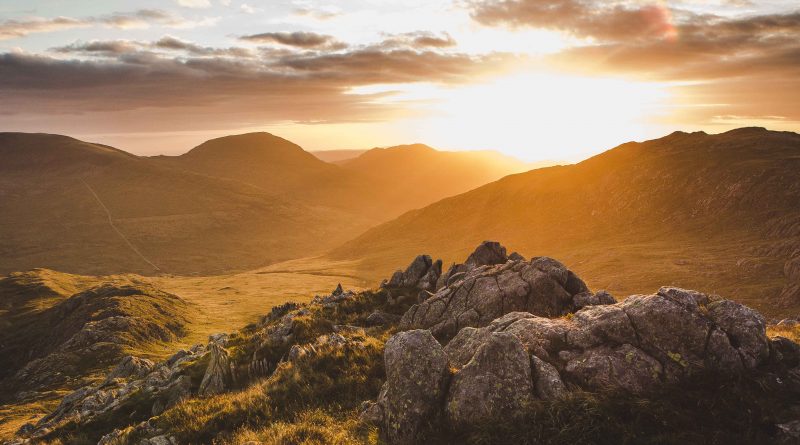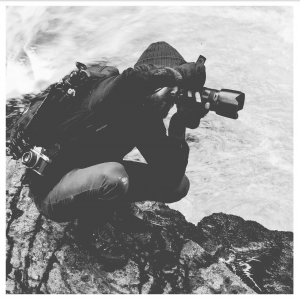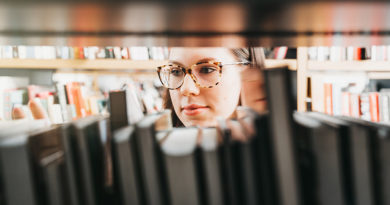JOMEC’s Hidden Talent: An Interview with Landscape Photographer Daniel Alford
It was only through a brief encounter that I came to discover a hidden talented photographer in our School. Besides working as a Technical Staff member at JOMEC, Daniel Alford (known to all as Alfie) is also a landscape photographer who has travelled the world. Currently a promoted landscape photographer on Instagram, Daniel will have an exhibition in Shanghai later this year. Let’s hear what he says about his passion in photography.
HMC: What does it mean to you, to capture nature with a camera?
It means a lot. I have always been passionate about natural history from a young age all the way to A-level and University were I studied Geology. I then switched to Music to satisfy my creative itch.
I love to be outdoors and to travel to wild places. My camera has taken me to a lot of beautiful places over the years. For me it’s all about putting yourself in the way of beauty, whether that’s waking up at 5am for a sunrise in the mountains, or hiking all day in the rain for a brief burst of light through the clouds. It’s where I feel most comfortable, the geological aspect of landscapes give me a great sense of perspective.
HMC: What messages would you like to deliver through your photographs?
It has always been an expression of my own appreciation for the natural world, as well as trying to encourage people to do the same. Different projects I do will have different messages, but I’m always trying to look at the relationship between humans and the natural world which is something that I feel is very important at the moment. I like to explore the line between documentation and creating an image. I have always liked to give my work a cinematic and emotive quality.
HMC: Where are the most memorable places that you have photographed?
One of my favourite places to visit was in the Cederberg mountains in South Africa. We drove hours into the desert on a dirt road to reach an outcrop of rock which has an ancient network of caves and ancient cave art paintings. It was so quiet and beautiful being the only people there, the stars in the night were the best I have ever seen them and I managed to take an incredible shot of the milky way. Another place that springs to mind was from my time in Greenland. I was traveling around photographing in the south of the country for a magazine called Ernest journal. On the first night I photographed the northern lights which has always been a dream of mine. We spent our days searching for whales, learning about the indigenous culture and visiting the Viking remains left by Eric the Red.
HMC: What places do you wish to visit in the future?
So many places! I have just returned from Norway last month for a shoot which has always been a dream of mine. Next year I am hopefully travelling to Easter Island with an Archeologist I know for a potential dig. Other places on the wish list are British Columbia, Patagonia, Oman, Jordan and New Zealand. I think my Ultimate dream would be to travel to Antarctica.
HMC: How do you combat the extreme weather conditions when you are camping?
When I first started out hiking and traveling alone my equipment was quite poor, so I have spent a good amount of uncomfortable nights in a tent in the highlands. With wet feet too. These days I have invested in good quality equipment to keep me safe and alive in extreme weather. A good pair of boots is key, so is a lightweight and warm sleeping bag. A hot meal goes a long way, and good rest is essential too. It’s important to know your limits and also when situations are not safe. This comes with experience and research, testing yourself and pushing yourself is part of what it’s all about.
HMC: In your opinion, what role does a camera play in the communication between humans and nature?
That’s an interesting one. I think to a certain extend most landscape photography or wildlife photography is almost like false advertising. It paints an untouched, idealistic, and pristine view of the world to its audience which I think is a very rare in reality at the moment. However, the other side of this argument is that it can be used encourage people to go outside and enjoy the natural world thus spreading awareness for how important it is. I tried to explore these ideas in my project ‘Tiny people in big places’ I have been shooting the project over the last few years waiting for tiny silhouettes to walk into my photographs. The message I wanted to send with this project is that I believed the most important aspect of the natural world at the moment is us, how we interact with it, and how we treat it.
HMC: Is there a difference between capturing the nature on film and on a digital camera?
I think the difference between shooting on film and digital will always same no what the subject is, fundamentally. However, it is interesting that the ‘film look’ is very popular in modern digital landscape photography, especially on social media with apps like VSCO and Instagram. For the work I do I would consider it not very practical to use film. Despite this there is an element and sense of permanence you get with shooting film. I started out shooting 35mm on a Pentax K1000 (still my favourite camera) mostly doing portraits and using the camera as type of journal. The excitement of getting a film developed is great, and the quirks you can get with film is great for creating really unique images. Digital photography doesn’t really have this, it’s like photographing with a computer compared to the analogue nature of a dusty old film camera. That is something I really appreciate and love. I have a too many old film cameras (although some would its argue still not enough! )
HMC: What camera do you use, and what are your favourite lenses?
I currently use a Canon 6D with a 24-70mm f2.8 and a 70-200mm f4, a Pentax K1000 with a 50mm and 28mm, and an Olympus XA2
HMC: Do you have any favourite photographers or cinematographers?
Yes! A few photographers and artist that spring to mind. Dan Tom, Kevin Russ, Chris Burkard, Finn Beales, David Yarrow and Andrew Lindsey.
HMC: What challenges and difficulties have you come across throughout your freelance career?
Before I made had any jobs doing travel and landscape photography I worked as a freelance camera operator and photographer. I was also an ambassador for the Princes Trust after I successfully received funding and operated my business. Starting your own business is always a challenge, I think the hardest part is trying not compare your 3 steps to someone else’s 7. Everyone has had a different journey to where they are now or where want to be, and it’s almost never straight forward or direct as one would imagine. Social media plays a huge role in this, creating an illusion of easy from the people you idolise. But you don’t get anywhere without making mistakes, working extremely hard and sometimes makes scarifies.
HMC: What advice do you have for young freelance photographers who want to enter the field?
I would say that if you are serious about whatever it is you want to do then you need to live and breathe it. If that’s landscape photography for example then be patient, keep shooting and putting out content into the world. Know your audience and utilise social media to find people who are doing similar to you. Don’t copy them but learn from them find what you love and what you hate, and create something which has meaning. Narrative is key, keep it simple and keep doing it. Oh and get out there!
HMC: What are your future plans?
Travel as much as I can and take more photographs!
For works by Daniel Alford, please visit: http://www.danielalford.co.uk/
Hiu Man Chan is a PhD candidate at JOMEC, and columnist for the UK-Chinese Times. Twitter: @H_onfilm




